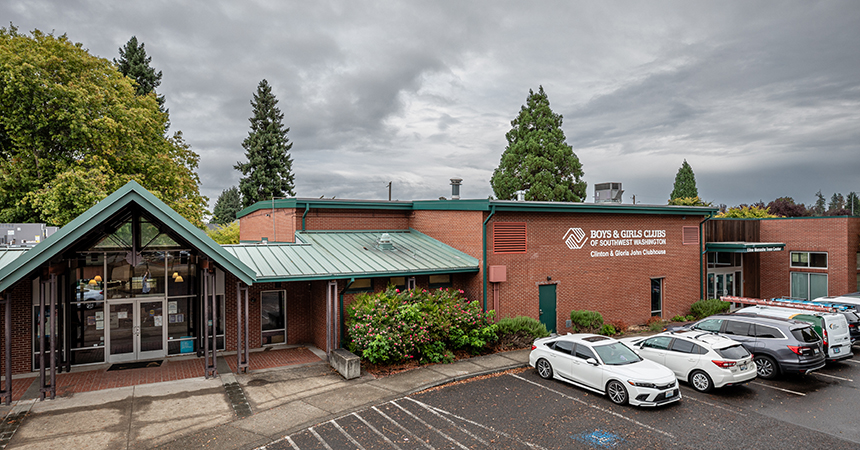Built in the 1950s, the building that once housed Hazel Dell Elementary was later transformed into the Clinton & Gloria John Clubhouse for the Boys & Girls Clubs of Southwest Washington. Today, it may be the oldest club in the area, but it serves as a vital hub for after-school and summer programs for kids from ages six to 18.
Every year, hundreds of kids participate in everything from art and STEM programs to basketball leagues and teen leadership activities. “During the school year, we see about 140 to 250 kids a day at the clubhouse,” said Executive Director Francisco Bueno. “And across our eight clubs in Clark County, more than 600 kids come through our doors daily.”
But like many older buildings, the clubhouse comes with challenges.
“Our clubs get incredible usage,” Bueno said. “For example, when you buy a sofa for your house you have one or two people sitting on it in a day. When we buy a sofa at a club, we have 100 kids sitting on it in a day. Things wear out faster, and the costs to heat and maintain the clubs are higher.”
And most importantly, safety is always top of mind.
“At the end of the day, if our buildings aren’t safe, we can’t do our work for kids.”
Recognizing the need to prioritize safety, the organization launched a $1.3 million seismic upgrade of the gym, supported by funding from the Washington Department of Commerce and local donors.
Enter Energy Trust of Oregon: From zero to sixty
Amid the large-scale renovation, the existing gym roof had to be torn off and re-insulated. A former board member suggested connecting with Energy Trust, and that introduction turned out to be a huge win.
Although the seismic work was nearly finished, the club learned they could still qualify for cash incentives. By documenting the project with photos and records, the clubhouse received $16,700 in incentives to insulate the gym roof, increasing its R-value – a measure of how well insulation resists heat loss – from zero to 60.
Bueno says Energy Trust “was incredible” and made the process simple.
That simplicity matters for nonprofits, where staff juggle limited resources, too. “It wasn’t something we were planning, but once we learned about Energy Trust, it just made sense to pursue the incentive,” Bueno said. “There’s zero negative that can come from engaging with Energy Trust, there’s just opportunity.”
Warmer winters, lower bills
The results were immediate.
“In the winter, you can feel the difference in the gym,” Bueno said. “That efficiency extends to other parts of the building too, since the gym is connected to the rest of the clubhouse.”
The insulation improvements are expected to save about $4,400 annually in heating costs. For an organization that never turns a kid away due to inability to pay, those savings go a long way.
“Every dollar we save on operations is a dollar we can put back into youth programs,” Bueno said.
Stewardship and the bigger picture
For Bueno, energy efficiency is about more than just cost savings, it’s about community stewardship. “We raise most of our funds through philanthropy,” he said. “It’s about being good stewards, and it shows our community that we care about how we run every part of the organization.”
“When we save on energy, we’re showing donors and partners that we’re intentional and responsible with their support.” – Francisco Bueno, Executive Director
Learn more about how your non-profit or large facility can save energy with support from Energy Trust. Visit our cash incentives page here or get started on your energy-saving project by emailing existingbuildings@energytrust.org.

